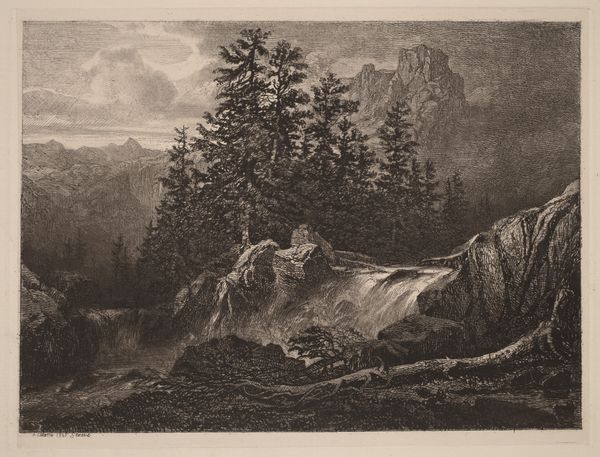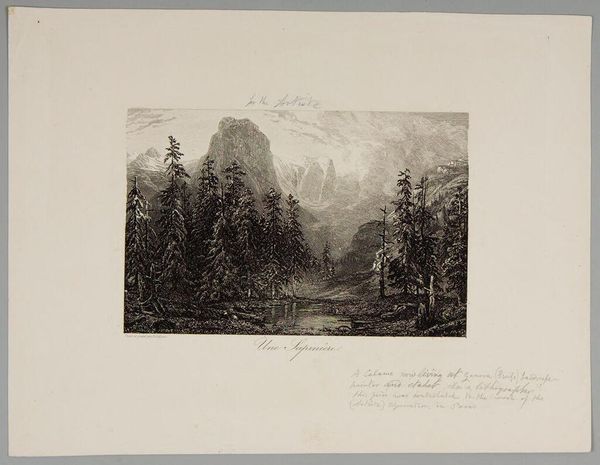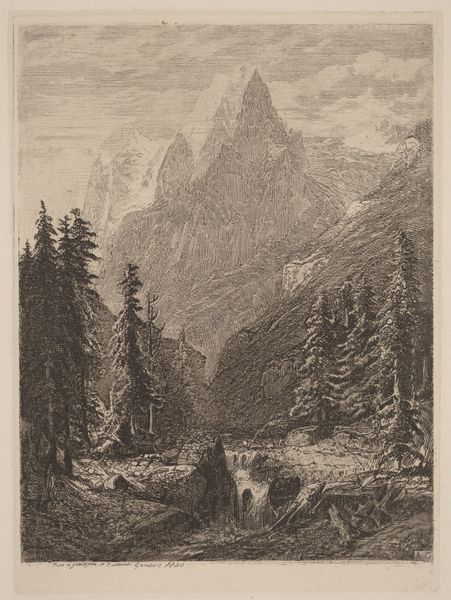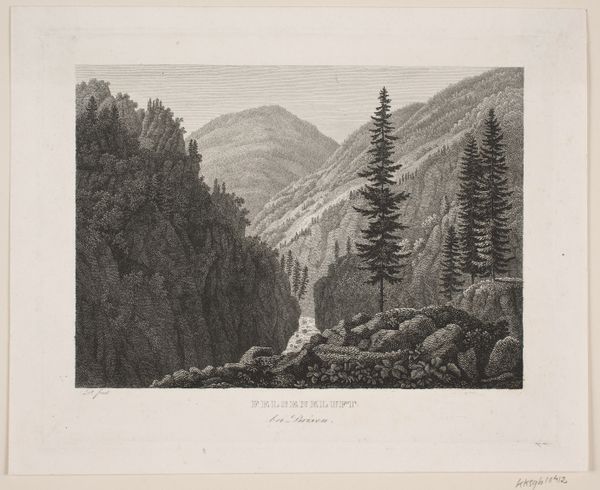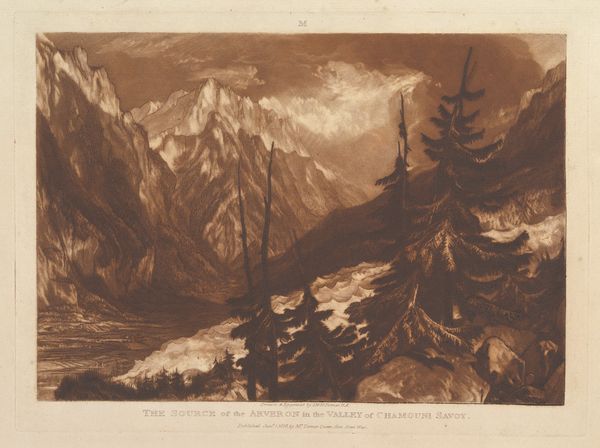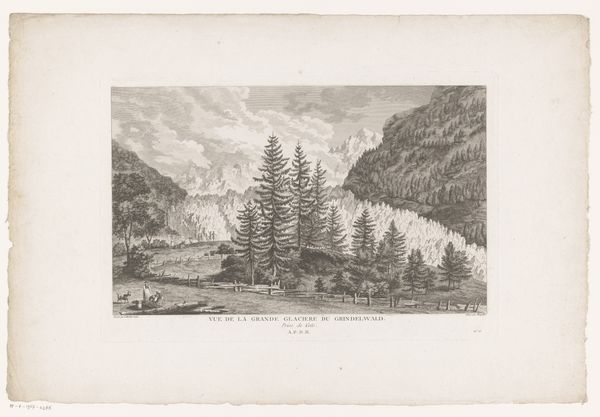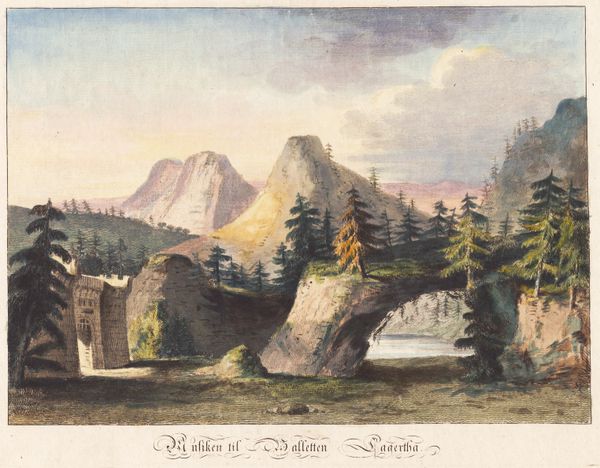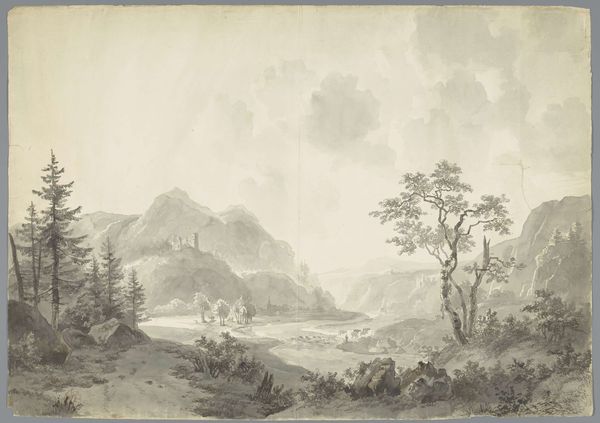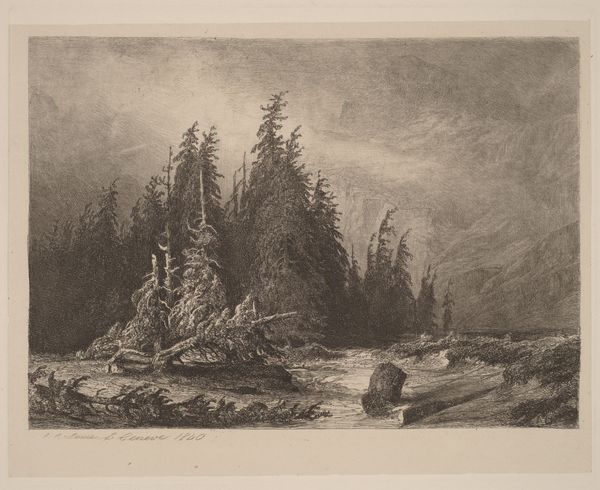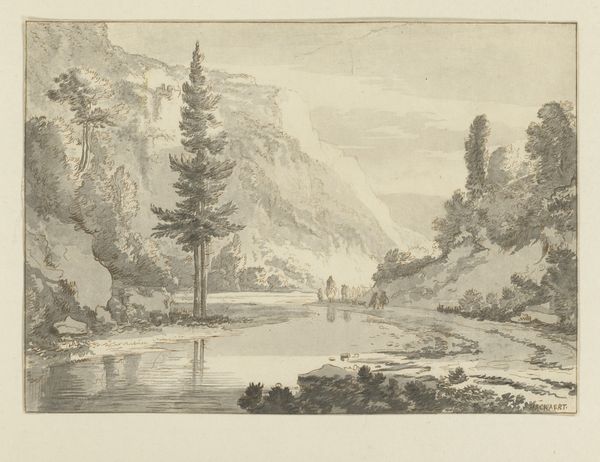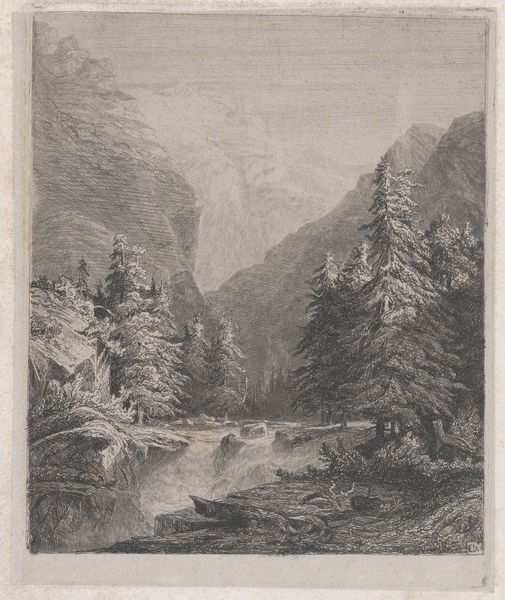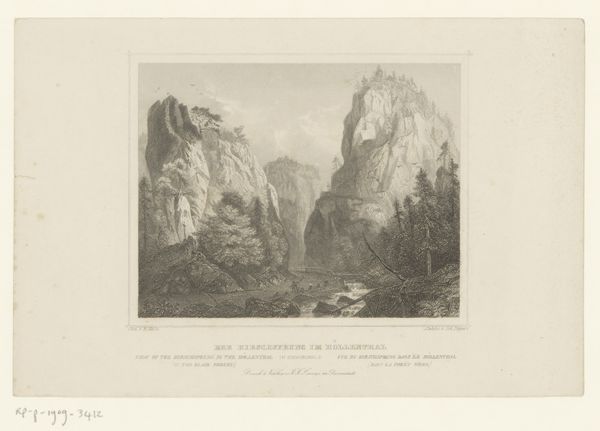
print, etching
# print
#
etching
#
landscape
#
etching
#
romanticism
Dimensions: plate: 14.8 x 20.3 cm (5 13/16 x 8 in.) sheet: 26.9 x 35.9 cm (10 9/16 x 14 1/8 in.)
Copyright: National Gallery of Art: CC0 1.0
Alexandre Calame created this landscape etching, entitled 'Une Sapinière', at an unknown date in the 19th century. Calame was Swiss, and specialized in idealized, sublime views of the Swiss Alps. Here, we see how the visual language of the sublime - towering mountain peaks, the implied insignificance of the human figure - could be translated into the more reproducible medium of etching. Prints like these fuelled the 19th century fashion for Alpine tourism and were often bought as souvenirs. Calame was a professor at the Geneva Academy, and he did much to establish landscape as a respectable genre in Switzerland. However, critics have noted that Calame’s romantic nationalism papers over Switzerland’s own social problems. By turning the nation into a picturesque vista, political issues such as poverty or class division are conveniently ignored. To learn more, search museum collections for similar landscape prints. Consider also the history of Alpine tourism, and its impact on the landscape.
Comments
No comments
Be the first to comment and join the conversation on the ultimate creative platform.
